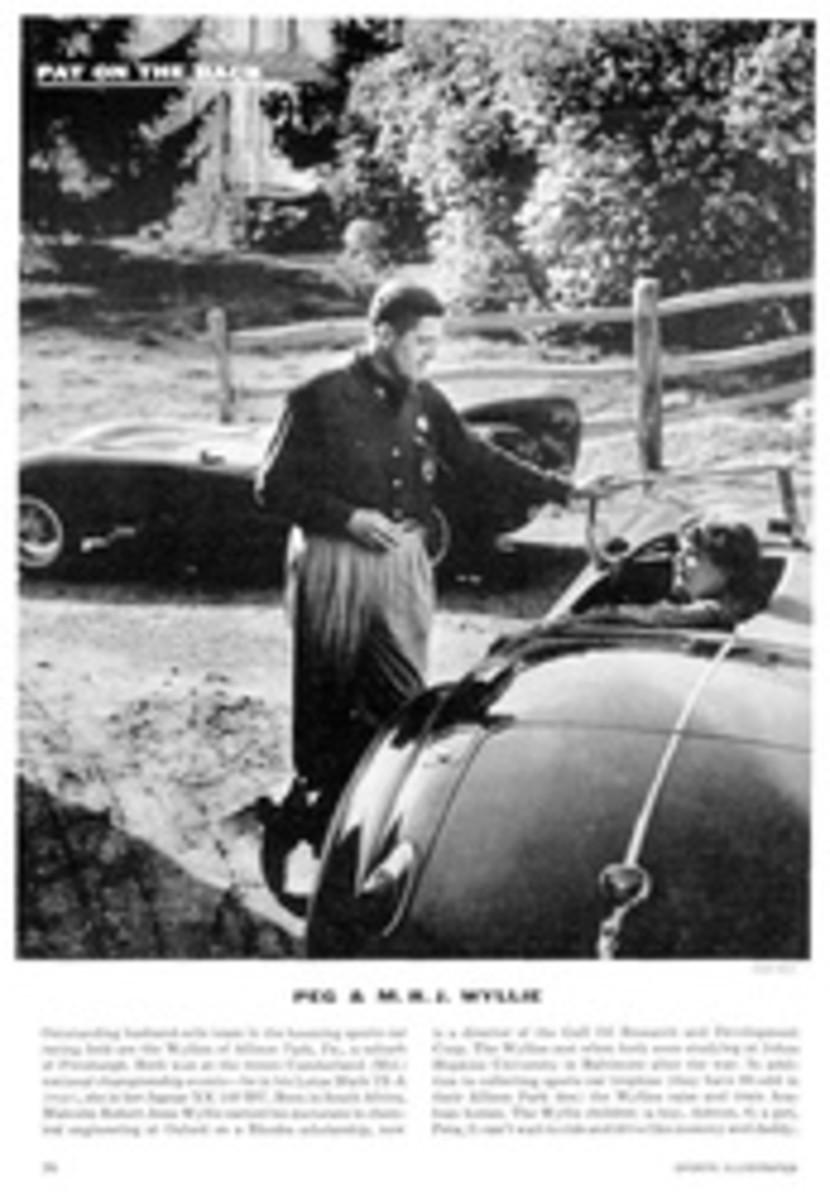
THE FISH PRINT
The unusual pictures on the opposite page are examples of a subtle art form, the Japanese fish print, or gyotaku, which stems from the sport of fishing. Sport fishermen of Japan have recorded their prize catch with fish prints for centuries, but Westerners only recently have become aware of this process. One who has tried his hand at it is Fred T. (Cappy) Ealand, a retired businessman in Houston, Texas. Ealand became interested when he read an article on fish prints, and started working out his own way of doing them. His prints of a golden croaker (top, at left), a red snapper (center) and flounder from Texas, are the result.
On these pages Ea and shares with fellow fishermen the process of fish printing as he has developed it. The account that Ealand found about Japanese prints was not extensive, and the deceivingly simple process of inking a fresh-caught fish and laying a sheet of rice paper over it presented numerous problems. He tried many inks and papers before deciding on the most suitable for his use. He is still experimenting, and anyone who does a fish print will be tempted to try new methods, perhaps using colored inks as the Japanese sometimes do.
Basically the prospective fish printer must have a flat board, some rice paper, glue, brushes, ink, brads and tack-hammer, a few small flat pieces of wood, a fish and lots of patience. Ealand uses a thin solution of glue (gum tragacanth, a powdered variety dissolved in water) to seal the pores of the freshly washed fish, although the Japanese do not usually do this. And in place of Japanese sumi, a thick carbon-black ink, he uses Higgins' neutral, grayish and less dense.
The strip pictures at right show the step by step process. In No. 1 Ealand wipes the fish with a damp sponge to keep it moist; in No. 2 fins and tail are tacked with brads to small pieces of wood, fanning them out for proper effect. The heads of the brads are clipped off and tapped flush with the fin to avoid perforating the paper. In picture No. 3 Ealand brushes the fish with gum tragacanth; in No. 4 he fastens rice paper to the board with thumbtacks, carefully measuring it so that the printed impression will be centered. No. 5 shows him applying ink with a camel's hair brush. Ealand starts in the middle and works toward the edges because the ink runs down the sides. The fins are inked last. After letting it set for about three minutes he retouches spots that need more ink. The crucial stage is shown in picture No. 6: letting the paper down over the inked fish without smudging. When accomplished, Ealand gently presses and strokes the paper with a wad of cleansing tissue or cotton (No. 7), starting at the tail. Picture No. 8 shows the breathless moment of slowly and carefully peeling the paper back to reveal the finished print.
In the hands of a master craftsman this art reaches an apex of artistic and scientific merit. From the viewpoint of the ichthyologist it is an accurate "blueprint" with which he can study a fish at leisure, analyzing its characteristics and counting each scale. As a work of art a fish print has high decorative value and when framed makes a handsome addition to the rumpus room or country house.
There is a more difficult and exacting method of making gyotakus, in which the Japanese excel and which gives an impression of the greatest detailed accuracy. It is called the indirect method. Instead of inking the fish one prepares it by cleaning the scales with a toothpick and then wetting it. The rice paper is laid on it and carefully molded to it with light pressure. The ink is then dabbed on the damp paper with a bit of cotton wrapped in silk, or a fine powder puff. A light and dexterous touch is needed to do this correctly, but if it is achieved the result is beautiful.
The beginner's first prints by either direct or indirect methods will probably not be clear or precise. But he should not lose heart. The fact that one can become expert is proven by the quality of the Japanese gyotakus. There is a Gyotaku Club in Tokyo which recently held an exhibition of their art. It received critical acclaim. And included in it were the works of two Westerners, a British dentist and an American woman, who had learned the art while living in the Orient. A similar exhibition from Tokyo opens in New York's Museum of Natural History June 22.
ILLUSTRATION
GOLDEN CROAKER
ILLUSTRATION
RED SNAPPER
ILLUSTRATION
FLOUNDER
PHOTO
FRED EALAND SPONGES AND TACKS PREPARATORY TO MAKING A PRINT
1
PHOTO
[See caption above.]
2
PHOTO
COATING OF GUM AND CAREFUL PLACING OF THE PAPER COMES NEXT
3
PHOTO
[See caption above.]
4
PHOTO
INK IS APPLIED WITH A BRUSH AT THE MIDDLE, WORKED TO EDGES
5
PHOTO
[See caption above.]
6
PHOTO
TISSUES ARE USED TO PRESS RICE PAPER ON THE INKED FISH FOR PRINT
7
PHOTO
[See caption above.]
8
ILLUSTRATION
THE BEAUTY AND DETAIL WHICH CAN BE ATTAINED IN A FISH PRINT IS EASILY SEEN IN THIS LOVELY ONE DONE BY A JAPANESE MASTER
PHOTO
CAPPY EALAND poses with a finished print in front of a painting he did inspired by Hemingway's Old Man and the Sea.

